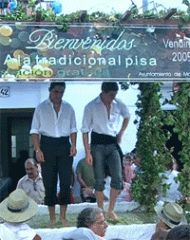
Nerja was one of the first resorts I ever visited on the Costa del Sol and nearly 30 years later, it remains one of my favourite places. Despite the boom in tourism and construction over the last decade, Nerja has managed to keep its Andalucian flavour and is still quiet and relatively unspoilt.
Popular with families and couples, Nerja has plenty to offer the holidaymaker. And although the summer months are busy, this part of the Costa del Sol is a world apart from the noise, glitz and glamour that pack Marbella to bursting point in July and August.
Landscape – Tropical Ravines
The eastern end of the Costa del Sol has a drier and warmer climate so the countryside isn’t quite as verdant as the western end. But the balmy winters and hot summers are perfect for growing fruit and vegetables. As well as acres of the usual staples, expect to see lush plantations of a long list of tropical delights: avocado, custard apple, loquat, mango, papaya…
Nerja and its surroundings are steeper and rockier too with some of the most spectacular ravines and rugged peaks in the area. The plunging cliffs also make for a coastline dotted with coves, some sandy, some pebbled, some a mixture. But all with warm turquoise waves and the best conditions on the Costa del Sol for snorkeling.
As a general guide, Nerja beaches are smaller and quieter than those in Malaga, Fuengirola and Marbella. This side of the coast even has some practically inaccessible coves where you can spread your towel in almost total solitude. A big plus if you’re looking to escape the August crowds.
Third Most Popular Tourist Attraction in Spain
Nerja’s best known attraction is undoubtedly its caves. This fascinating succession of caverns, grottos and passageways takes you deep underground while you admire nature’s rock sculptures.
The caves are home to the world’s tallest stalagmite (32m) and some ancient cave paintings. Recent research has discovered that Nerja caves are older than originally thought and were probably inhabited by man 43,000 years ago. This could make the caves the Costa del Sol’s first settlement.
An Oasis of Tranquility
Many, many centuries later, Nerja is still a favourite place to live, retire and visit with Spaniards and foreigners alike. It might not have the hustle and bustle of other Costa del Sol holiday resorts, but its tranquility and timeless quality lend it a unique atmosphere that you won’t find anywhere else. Why not discover Nerja for yourself in 2013?
Tags: Costa del Sol resorts, Nerja beaches





